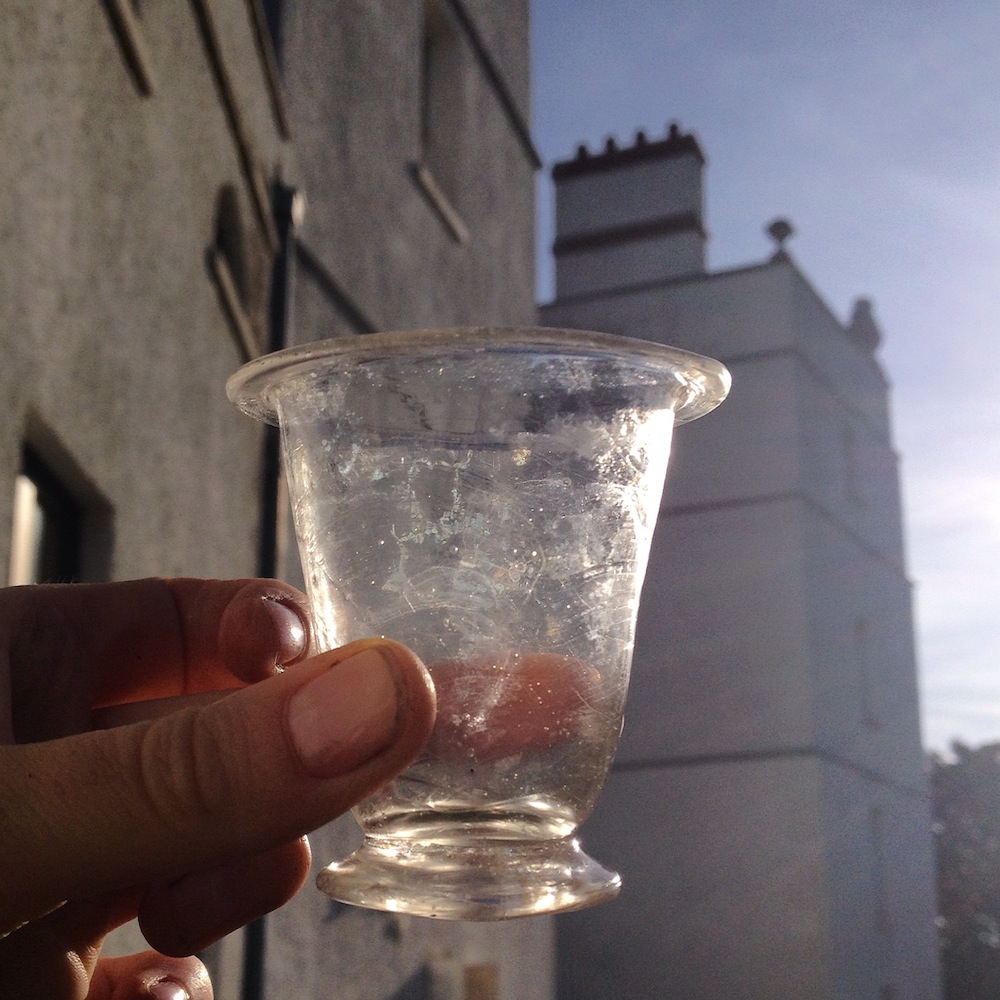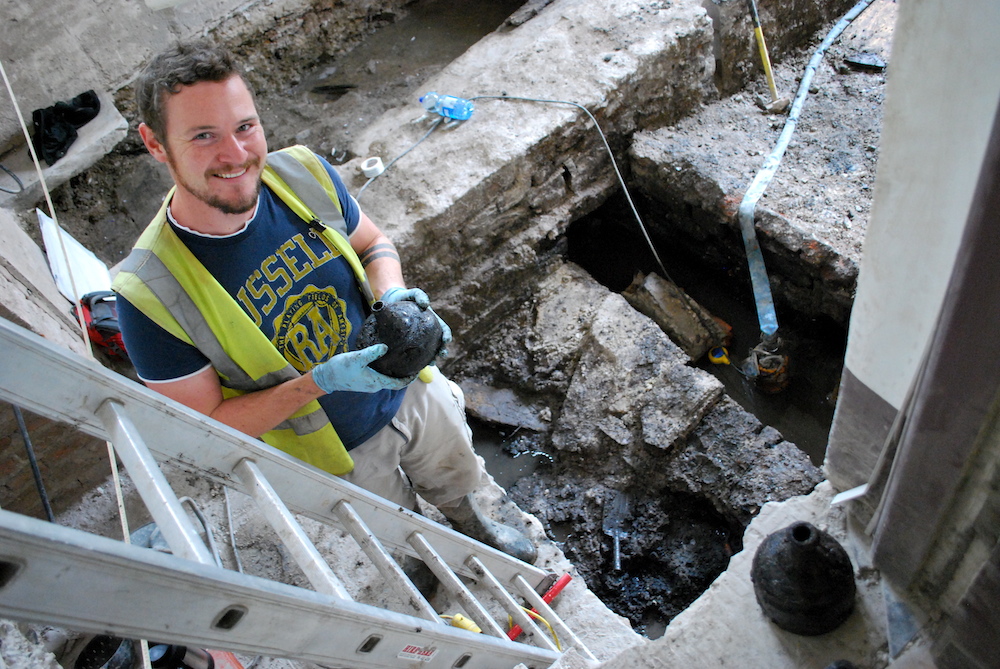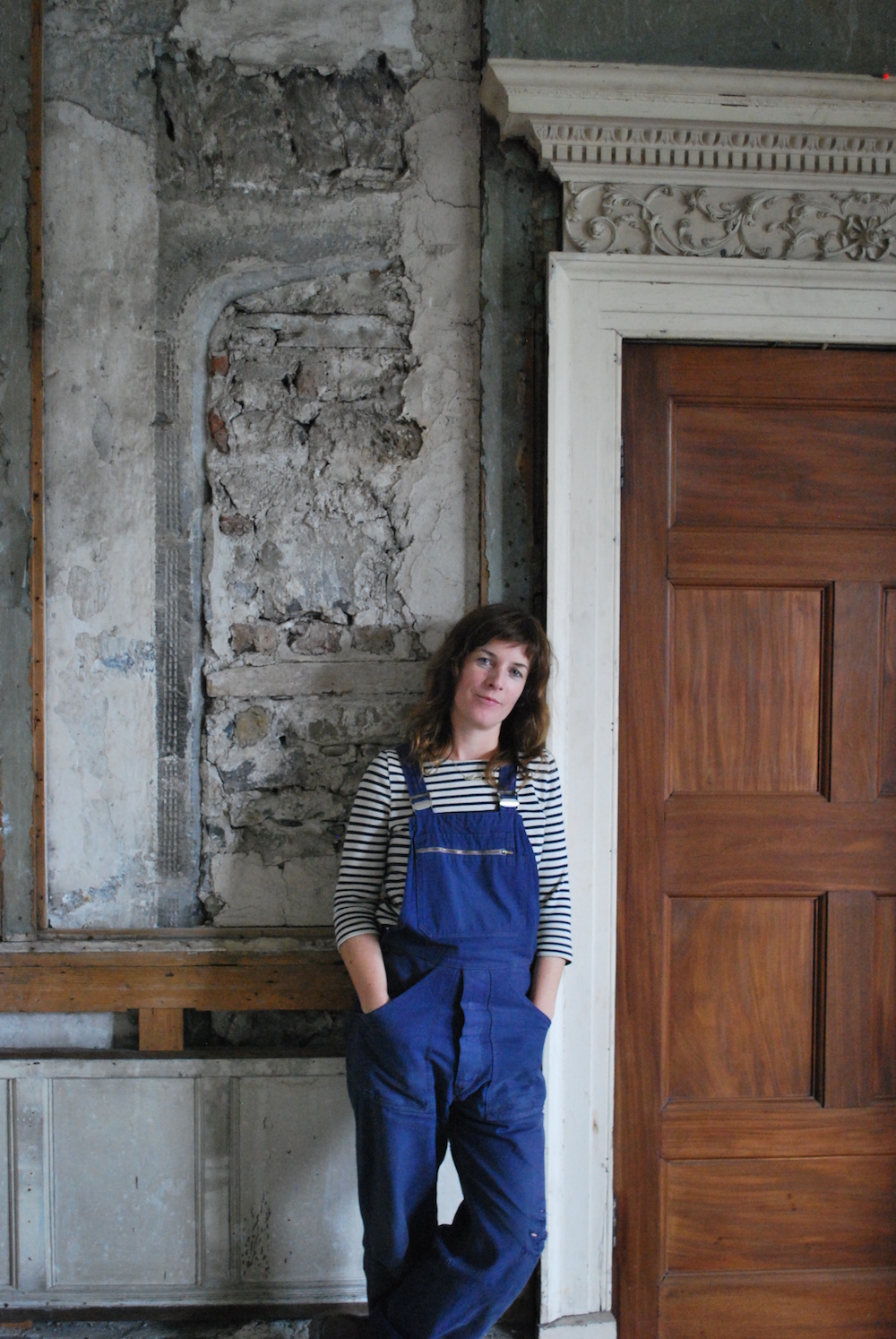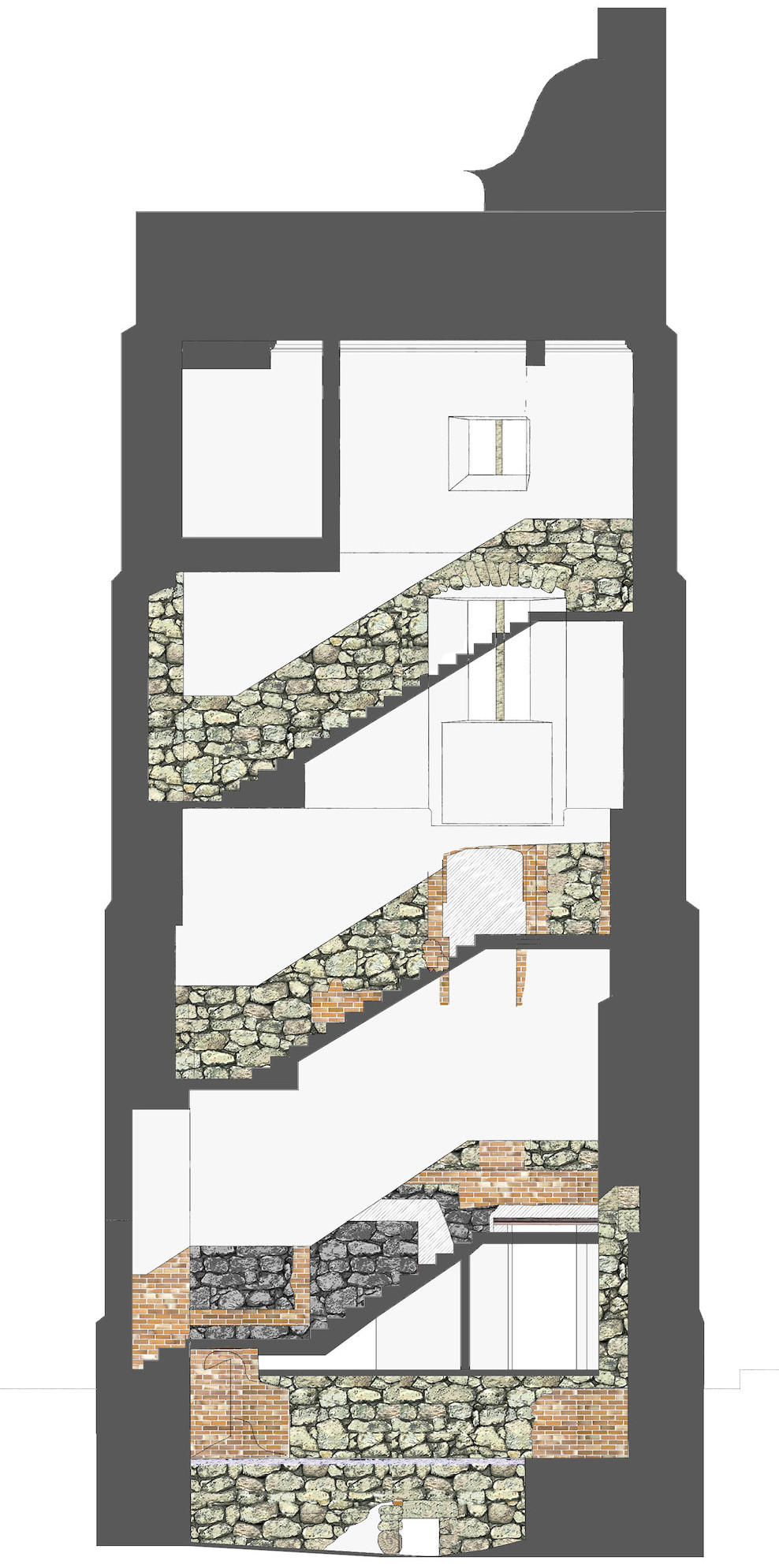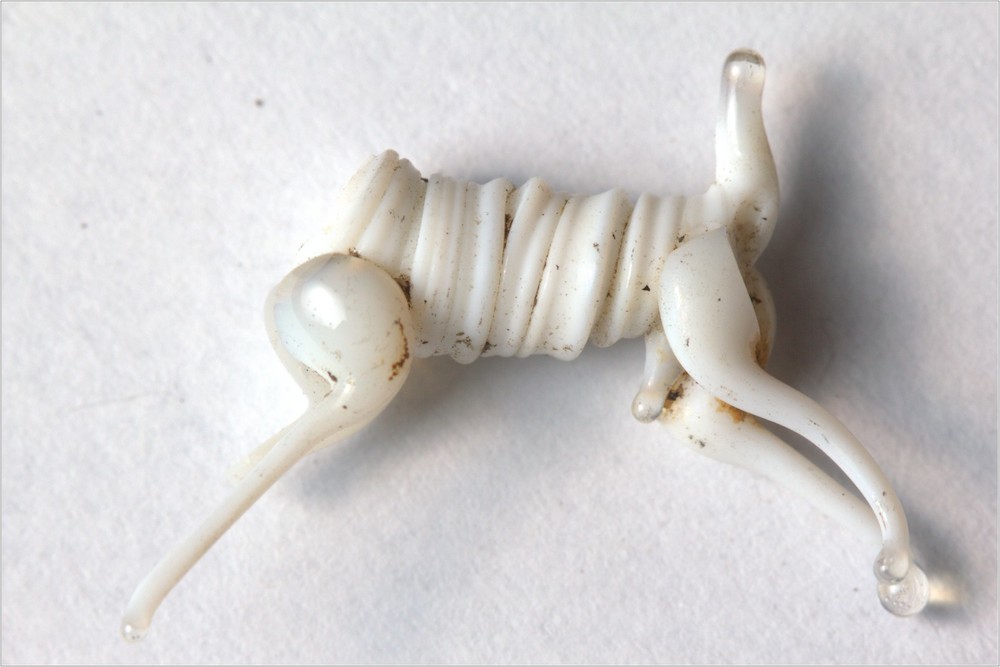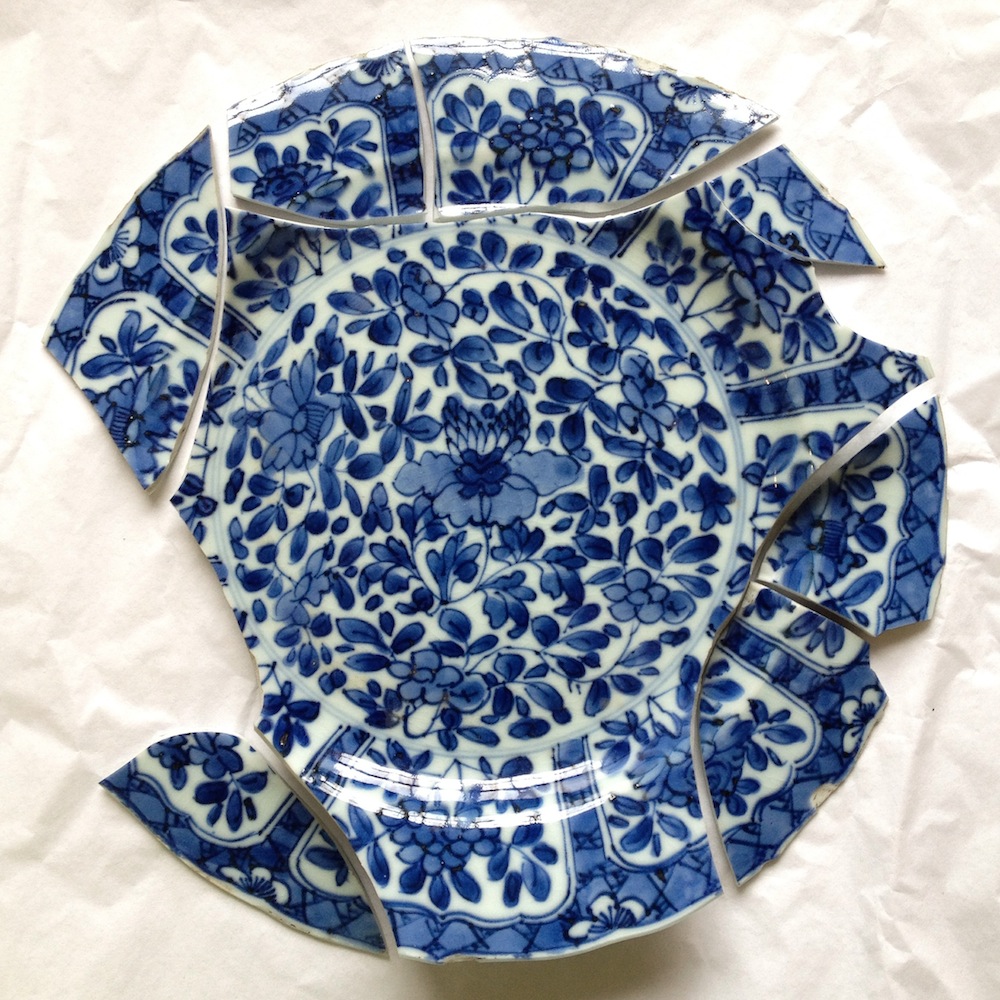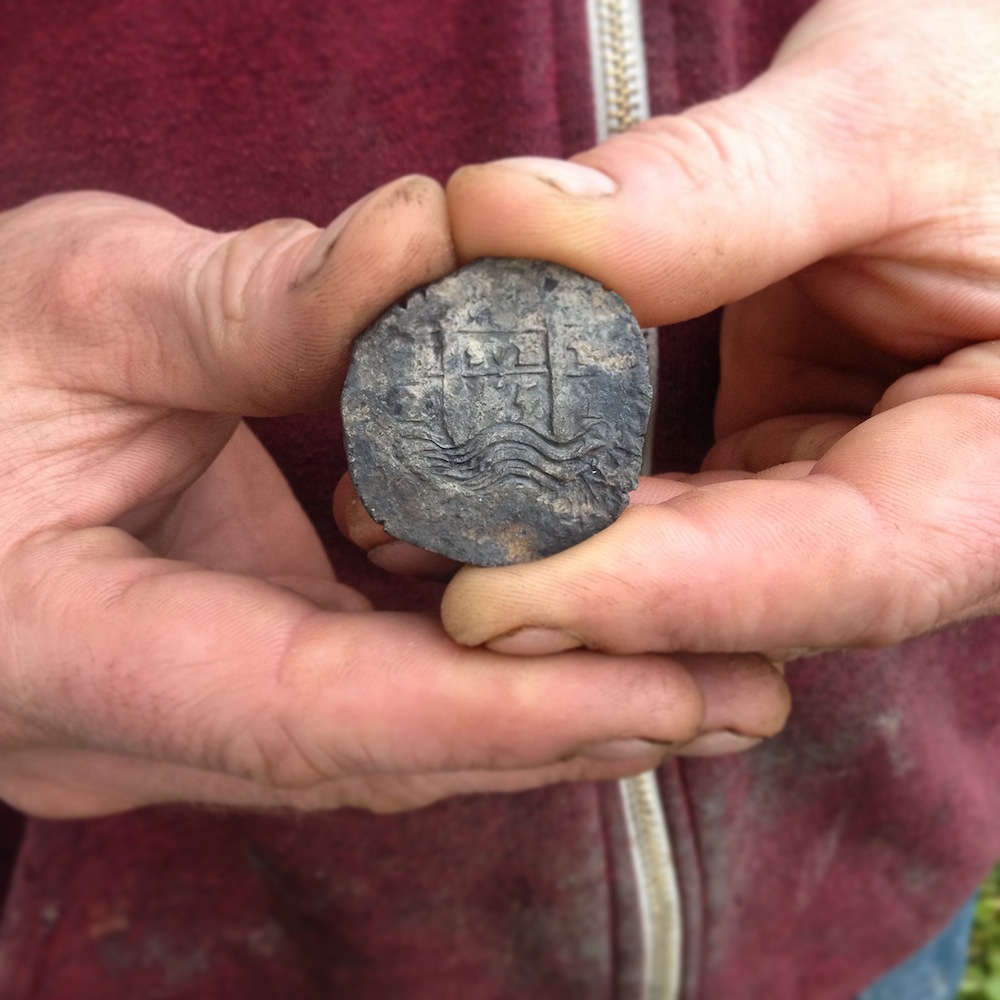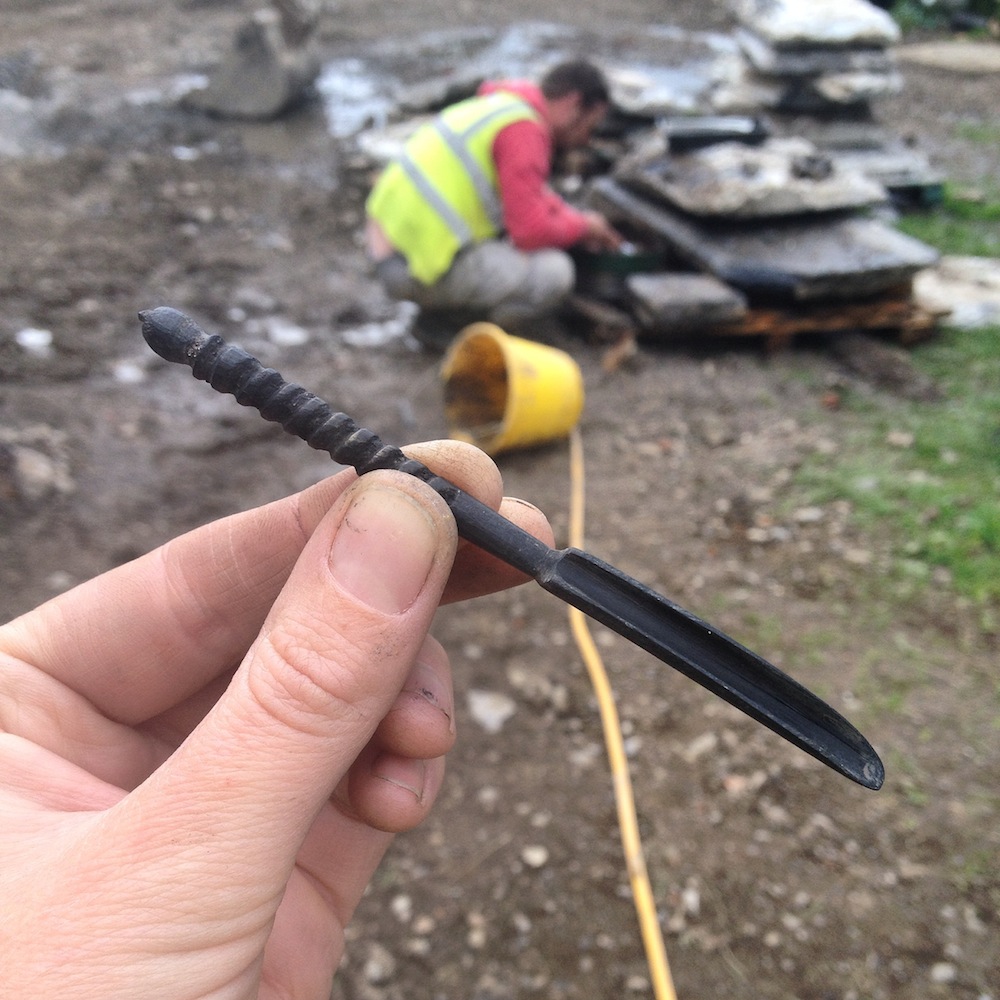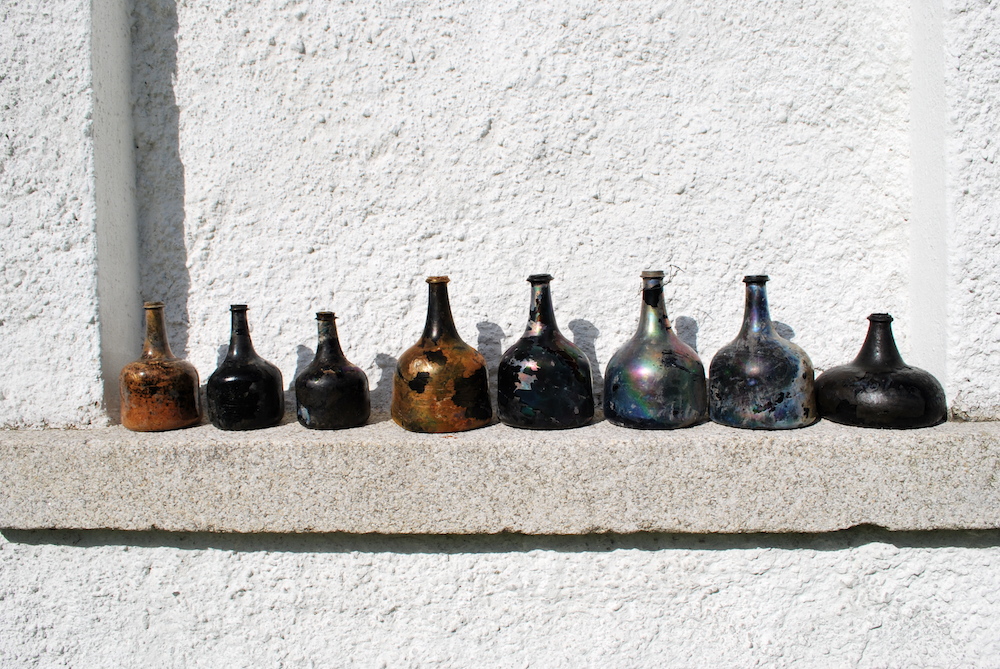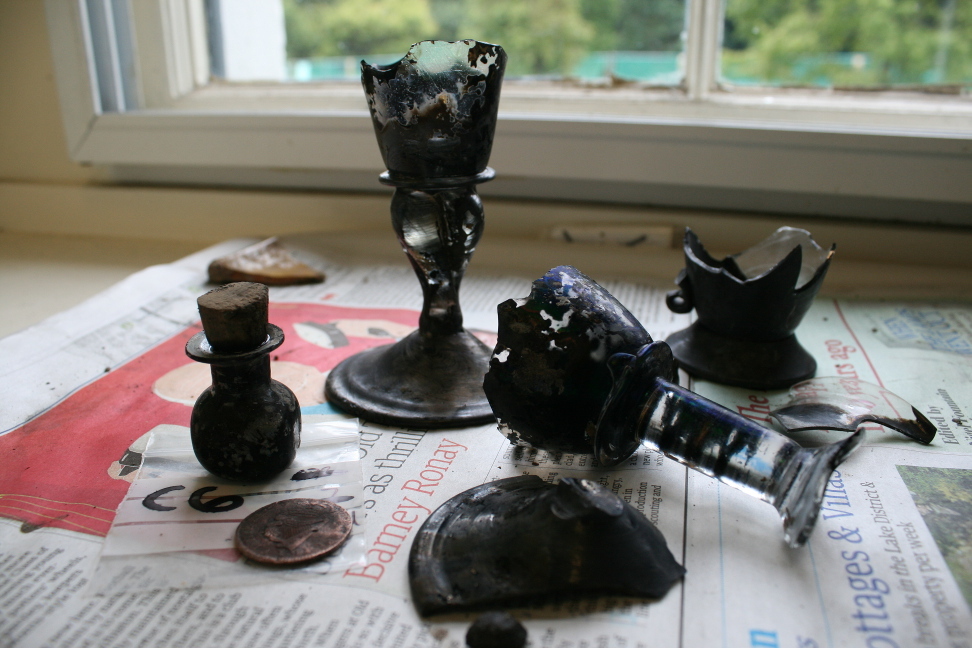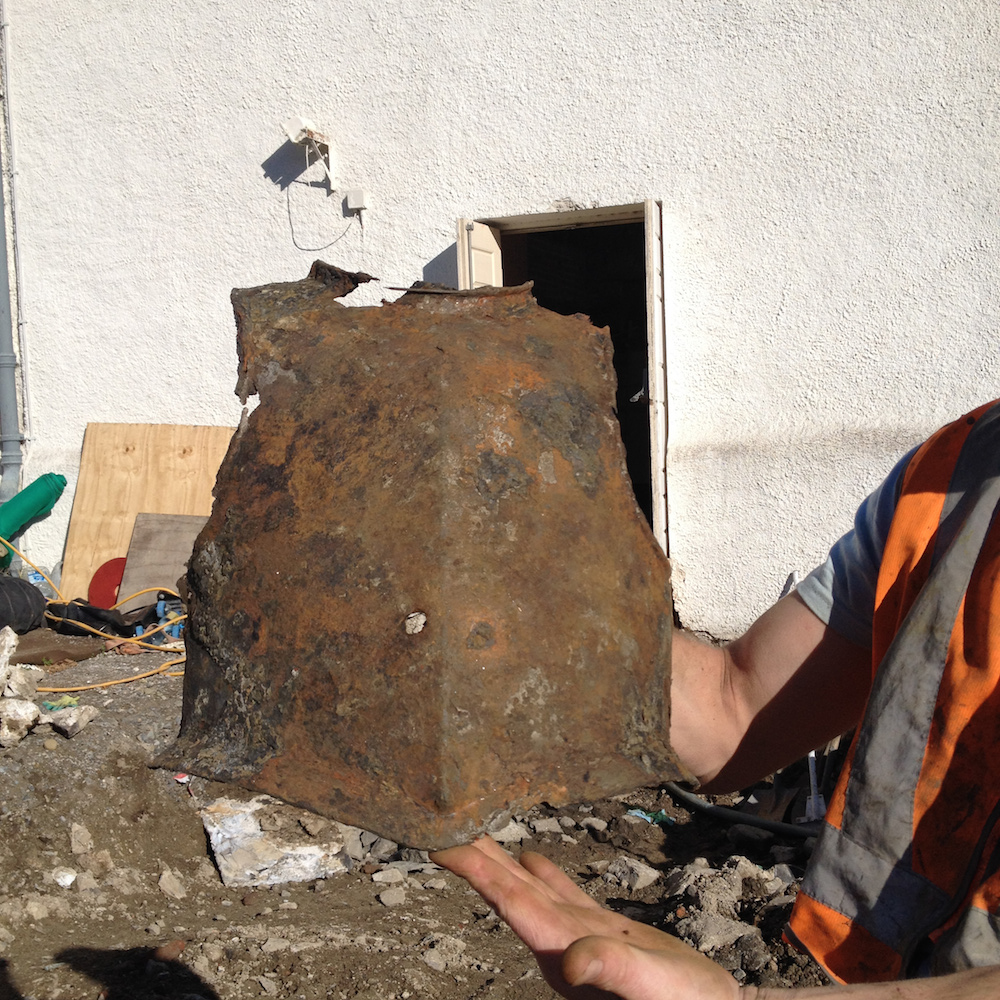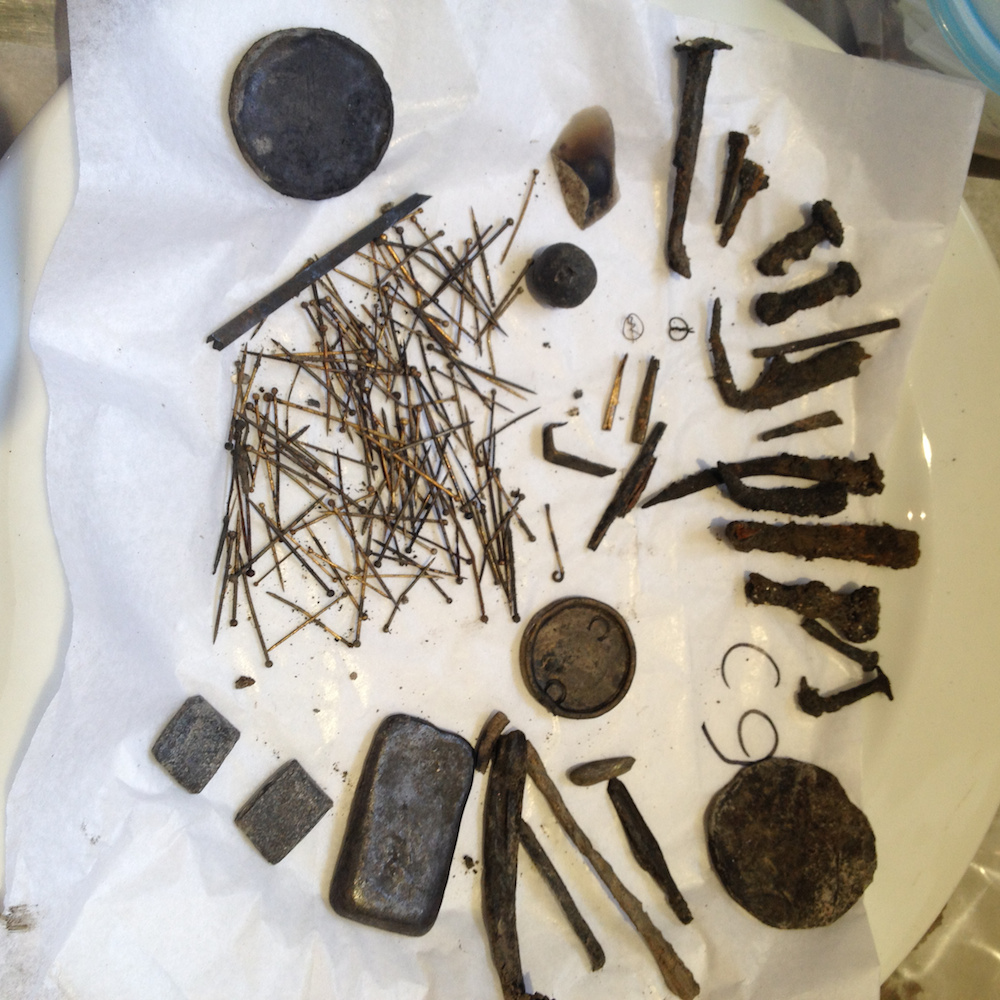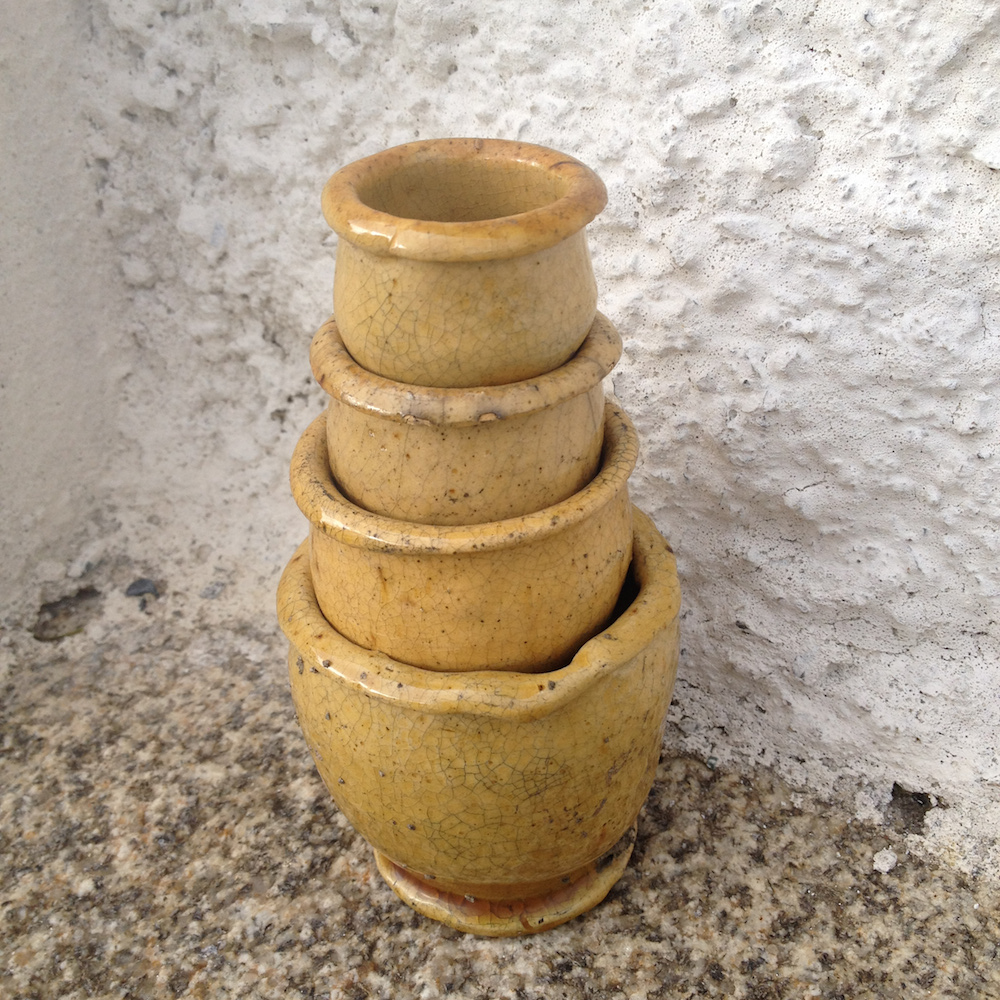Photos: Amazing Irish Artifacts from Rathfarnham Castle
During an excavation of Ireland's Rathfarnham Castle, archaeologists found a horde of 17th-century artifacts hidden in a washing pit. The artifacts tell about the everyday lush life led by the Loftus family, who lived in the castle in the late 1600s. The archaeologists are now preserving the artifacts at the castle, a national monument in south Dublin, and hope to put them on public display in 2017, at the earliest. [Read full story on Rathfarnham Castle]
Drinking glass
This delicate lead-crystal drinking glass is one of many dinnerware items that hint at the castle inhabitants' opulent life. It's likely that these artifacts belong to the household of Lord Adam Loftus, who lived from 1625 to 1691. The lord died when his head was blown off by a cannon as he left his tent at the Siege of Limerick, said Antoine Giacometti, archaeological director of Archaeology Plan, an organization that preserves Ireland's archaeological heritage. (Photo credit: Alva Mac Gowan | Archaeology Plan.)
Excavation expedition
Steven McGlade, of Archaeology Plan, excavates a 16th-century castle tower. Rathfarnham Castle, built in 1583, has artifacts from every generation of people who lived there until the castle became a national monument in 1987. (Photo credit: Alva Mac Gowan | Archaeology Plan.)
Redone door
Archaeologist Alva Mac Gowan, of Archaeology Plan, stands next to a 16th-century door (left), which was later replaced by an ornate 18th-century door (right). (Photo credit: Antoine Giacometti | Archaeology Plan.)
Get the world’s most fascinating discoveries delivered straight to your inbox.
Sideways profile
A profile of Rathfarnham Castle in South Dublin. Building conservationists are making the castle more accessible to the public by putting in elevators. The castle is set to reopen in 2015. (Photo credit: Antoine Giacometti | Archaeology Plan.)
White horse
Glass figurines, such as this small white horse, may have decorated lavish Venetian glass goblets. (Photo credit: Alva Mac Gowan | Archaeology Plan.)
Red stamp
Incredibly well-preserved red wax seals bear coats of arms or portraits. The seals were found on documents received at the castle, which provide insight on the inhabitant's correspondence. (Photo credit: Alva Mac Gowan | Archaeology Plan.)
Floral patterns
The archaeologists found several porcelain plates and teacups imported from China in the washing pit, including this blue-and-white plate. The plate, though broken, has visible 17th-century Qim Xi dynasty markings on the back. (Photo credit: Alva Mac Gowan | Archaeology Plan.)
Silver Coin
Several coins, including this rare silver colonial coin from Philip IV of Spain in 1655, which was minted in Bolivia, were found at the castle. Archaeologists also uncovered an Elizabeth I Irish Penny minted in 1602, a Charles II Armstrong Farthing from 1660, a Charles II '16 String Halfpenny' from 1680 and a William & Mary copper Halfpenny from 1692. (Photo credit: Alva Mac Gowan | Archaeology Plan.)
Special spoon
This rare bone marrow spoon may be made of ebony, a dense dark wood. Other 17th-century cutlery were inscribed with initials, and found with thousands of seeds and pips from olives, melons, grapes, cherries, peaches and other exotic fruit. The archaeologists also found shells, fish and bird bones, which suggests that the residents ate a rich diet. (Photo credit: Alva Mac Gowan | Archaeology Plan.)
Wine and spirits
These glass wine and spirit bottles found at Rathfarnham Castle were likely made in the 1650s. (Photo credit: Alva Mac Gowan | Archaeology Plan.)
Prime initials
Four of the wine bottles have an "AL 1688" stamp on their bottoms. The "AL" likely stands for Lord Adam Loftus, who had a wine cellar, and probably received these bottles three years before his death in 1691. (Photo credit: Alva Mac Gowan | Archaeology Plan.)
A toast
A set of lead-crystal goblets, now broken, were stained black by the organic deposit that they were preserved in for about 350 years. (Photo credit: Alva Mac Gowan | Archaeology Plan.)
Ultimate defense
A musket ball tore a hole in the middle of this seventeenth-century Cromwellian armor breastplate. Other artifacts, including musket balls, gun flint and small lead shot, were found at the Irish castle. (Photo credit: Alva Mac Gowan | Archaeology Plan.)
Clothing accessories
Jewelry, clothing attachments, buckles and well-preserved high-heeled leather shoes and slippers were found at Rathfarnham Castle. Other artifacts include wooden bobbins and hundreds of copper pins that helped with lace-making. (Photo credit: Alva Mac Gowan | Archaeology Plan.)
Little pots
Archeologists found yellow jars holding ointments and cosmetics next to medicinal drug jars, likely from Italy, and an uncommon folding travel toothbrush. The researchers plan to analyze the ointment from the seventeenth-century jars. (Photo credit: Alva Mac Gowan | Archaeology Plan.)
Follow Laura Geggel on Twitter @LauraGeggel and Google+. Follow Live Science @livescience, Facebook & Google+.

Laura is the managing editor at Live Science. She also runs the archaeology section and the Life's Little Mysteries series. Her work has appeared in The New York Times, Scholastic, Popular Science and Spectrum, a site on autism research. She has won multiple awards from the Society of Professional Journalists and the Washington Newspaper Publishers Association for her reporting at a weekly newspaper near Seattle. Laura holds a bachelor's degree in English literature and psychology from Washington University in St. Louis and a master's degree in science writing from NYU.
